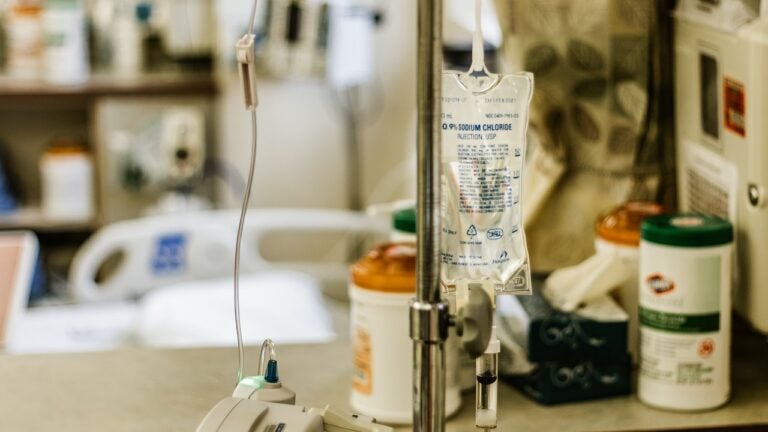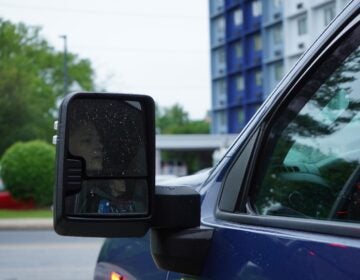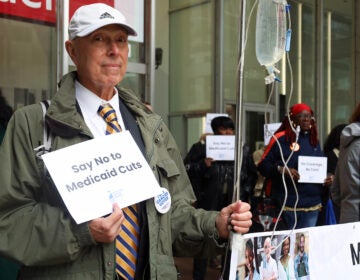Public health insurance claims soar in Pa., N.J. and Del.
The increase in people enrolling in medical assistance is exponentially higher than this time last year — but it’s still way less than officials expected.

(Allie Smith/Unsplash)
Are you on the front lines of the coronavirus? Help us report on the pandemic.
A paycheck isn’t the only thing workers are losing in the wake of layoffs and business closures across Pennsylvania, New Jersey and Delaware. For many, job loss comes along with the end of employer-provided health insurance. That, or a drop in income that bumps those previously making too much to qualify for Medicaid into its eligibility bracket, has resulted in exponential increases in public health insurance enrollment in all three states since the start of the pandemic.
In Pennsylvania, medical assistance enrollment went up by more than 50,000 from March to April. By comparison, from March to April of 2019, the rolls only increased by about 10,000. The biggest gains were seen in Allegheny, Delaware, Lehigh and Philadelphia counties, where the rolls increased by almost 11,000, compared to a roughly 1,000-person increase during the same time last year.
In New Jersey, the increase is even greater. 45,000 applications were received for its Family Care medical assistance program during the month of April.
For comparison, in April of last year, just over 5,000 people were added to the Medicaid rolls in New Jersey, making the increase this year nine times greater than in 2019. From March 15 to May 9 of this year, New Jersey received more than 73,000 new Family Care applications.
In Delaware, the number of medical assistance enrollees increased by just over 3,000 people during April of this year. That may not seem like much, but last year over the same period of time the rolls actually slightly decreased, demonstrating a significant increase in demand due to the pandemic.
Despite this growth, government officials were anticipating even bigger jumps. The bump in medical assistance applications is just a drop in the bucket when compared with unemployment claims: more than 700,000 jobs were lost in New Jersey in April. Nearly 2 million have applied for unemployment compensation in Pennsylvania.
“While these increases are substantial, they’re not the surge in applications that many have expected,” said Teresa Miller, Secretary of the Pennsylvania Department of Human Services. Miller said in fact, much of the increase in Pennsylvania may be due to a simple rule change during the pandemic: no one will be kicked off the medical assistance rolls if they fail to update their enrollment application.
“Initially, when I saw those numbers, I thought ‘wow, we’ve got a lot more people on,’” said Miller. But as her team analyzed the data, they realized the 2% increase in applicants from February to April was about the same amount the state usually loses each month when it terminates people for failing to renew.
Many may put unemployment compensation claims ahead of health insurance if they are confident their job loss is temporary, said Robin Rudowitz, a vice president at the Kaiser Family Foundation.
“Individuals think they’re going back to work pretty soon, so there may be a delay in applying for health coverage,” she said. It’s also possible that furloughed employees may qualify for unemployment benefits, but continue receiving health insurance.

Get daily updates from WHYY News!
In an ironic twist, some who lose their jobs may qualify for generous enough unemployment benefits that they are rendered ineligible for Medicaid. The federal supplemental $600 weekly unemployment compensation does not count towards Medicaid eligibility, but is considered in determining the cost for those applying for marketplace insurance through the Affordable Care Act — it also counts towards SNAP eligibility. Still, said Lisa Watson, Pennsylvania Deputy Secretary of the Office of Income Maintenance, state unemployment benefits alone could bump someone out of Medicaid range.
“There are absolutely instances where they are going to be receiving more money by getting unemployment … than they would if they were working” said Watson.
She encouraged anyone in that position to apply for a plan through the federal insurance marketplace at healthcare.gov.
If past economic downturns are any indication, a spike in public health insurance applications will come eventually, as other federal stimulus money starts to dry up. Unfortunately, by that time state budgets may be stretched even thinner than they already are.
“You have more people who become eligible and enroll in a program like Medicaid at the same time states are experiencing declines in their state revenue,” said Rudowitz. “So it’s more difficult for states to pay for the programs at the time when the need for the programs is growing.”
Medicaid is paid for by a combination of state and federal dollars — the amount the federal government provides depends on the average income of each state, with the states where workers earn more receiving a smaller federal contribution. The Families First Coronavirus Response Act increased the federal match by just over 6% for every state, in anticipation that local governments would have trouble meeting the demand. Rudowitz said that as states struggle to balance their budgets and keep critical services from sliding onto the chopping block, that increase is likely not enough.
“Without additional federal money, with declining revenues and increased demand going into this next fiscal year [states are] going to face some pretty tough decisions,” she said.
WHYY is your source for fact-based, in-depth journalism and information. As a nonprofit organization, we rely on financial support from readers like you. Please give today.


![CoronavirusPandemic_1024x512[1]](https://whyy.org/wp-content/uploads/2020/03/CoronavirusPandemic_1024x5121-300x150.jpg)



